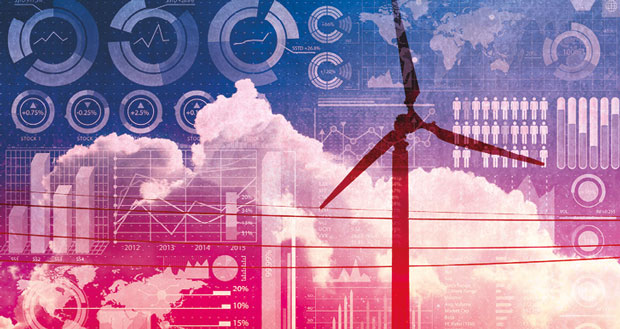 Laura Clare Davies, Sustainability Specialist at Inspired Energy, discusses how using the latest technology and data analytics can bolster energy management initiatives
Laura Clare Davies, Sustainability Specialist at Inspired Energy, discusses how using the latest technology and data analytics can bolster energy management initiatives
As we all navigate volatile energy prices, the transition to a low-carbon future is one that many businesses are looking to accelerate where possible. Energy management is central to this and as energy prices continue to rise, for many businesses successful energy management is critical in order to thrive.
Most organisations have started their journey to a low-carbon future with ‘quick win’ energy efficiency measures. These may include switching to LED lighting, using timers for appliances and adjusting heating controls. These measures are important, low cost and simple to implement and something everyone should be doing. But to move closer to a low carbon future and reap greater efficiency and cost saving gains, businesses must take the next step and adopt an integrated approach. This should look at energy optimisation and behavioural change, as well as reducing usage.
This holistic approach to energy management will not just focus on how much energy a business is using but also when and how they are using that energy. Digital technology has an important role to play here.
POWER OF DATA
To make effective change, data is key. Put simply, you can’t manage what you don’t measure, so businesses should start measuring their energy consumption before they begin their optimisation journey. Here technology will pay dividends, as data will show where, when and how a facility is using energy. This can be achieved with an energy management system (EMS), which will collect energy measurement data through a series of smart meters and collate it so users can monitor and ultimately manage their energy.
Smart metering can also help businesses to keep on top of their costs by implementing an automatic meter reading (AMR) device for non-half hourly supplies or a data collection contract for half-hourly supplies. This can provide them with greater control with a managed rollout. Measuring half-hourly (HH) data, particularly for those with multiple sites can be challenging.
An EMS can include all aspects of an organisation’s energy, from procurement, to usage, monitoring and on-site generation. There are a number of ways organisations can better use energy consumption data to help inform business decisions, keep energy costs in line with budgets and help with future planning. Firstly, they should review data regularly to understand how it can be used to support their energy strategy. Businesses should work from a baseline of their energy performance and then identify how factors such as production levels, behaviour and seasonality influence their consumption. Then they can prioritise areas for improvement and track their results to see if they are meeting or exceeding their goals and if the strategy needs further optimisation.
Organisations required to comply with regulatory schemes such as Streamlined Energy and Carbon Reporting (SECR) and the Energy Savings Opportunity Scheme (ESOS) will appreciate that sound data management is key. Those who have already submitted reports for SECR will tell you that data collation can be challenging, which means that starting data collection early is crucial.
HARNESSING THE BENEFITS OF ON-SITE GENERATION
Businesses that want to reap further sustainability, site resilience and cost benefits are turning to installing on-site generation. Energy management systems are vital in helping facilities managers harness the benefits of on-site generation, giving more control over all aspects of energy use.
Today, solar PV is a popular, robust renewable energy generation option and installing solar panels on the roof of a building for a project of <1MW in size shouldn’t require planning permission. Most solar panels will provide a good level of generation even on low light days and as they have a low degradation rate, could last up to 40 years.
March’s Spring budget brought welcome news for those interested in on-site generation. The Chancellor brought forward an exemption making green technology, including solar panels, exempt from business rates from April 2022, which is set to save businesses an extra £35 million in 2022-2023.
Often alongside considerations for on-site generation, the question of battery storage and its benefits is raised. One of the key benefits for businesses is site resilience, and if you are managing a facility where back-up power is critical for operation, battery storage is worth exploring. Battery technology is still in the earlier days of development and we do see high levels of degradation, so it’s important to factor battery replacement into forward budgeting from 10 years onwards.
MAKING A DIFFERENCE TODAY AND TOMORROW
Now is the time to step up energy management initiatives to the next level to benefit from further environmental and cost saving benefits. Embracing digital technology should be central to this as it will allow for comprehensive data gathering and management and empower all facilities to make well informed decisions about how and where to make savings. Digitisation is also going to be key to embracing on-site generation technologies, which will all link to an innovative energy management platform. It’s time to see net zero as a goal which is essential for our climate and for business and focus on the importance of the journey – every little change is going to add up to making a big difference.





